- Like
- Digg
- Del
- Tumblr
- VKontakte
- Buffer
- Love This
- Odnoklassniki
- Meneame
- Blogger
- Amazon
- Yahoo Mail
- Gmail
- AOL
- Newsvine
- HackerNews
- Evernote
- MySpace
- Mail.ru
- Viadeo
- Line
- Comments
- Yummly
- SMS
- Viber
- Telegram
- Subscribe
- Skype
- Facebook Messenger
- Kakao
- LiveJournal
- Yammer
- Edgar
- Fintel
- Mix
- Instapaper
- Copy Link
From September 1 – 8, I — Robin B — participated in the trip of a lifetime. Thanks to OVEC and an anonymous donor, I participated in the Presbyterians for Earth Care N-W Regional Conference titled “Seeing the Signs of the Times; A Practical Theology of Climate Change”; essentially this involved a ground tour of Alaska from Anchorage to the Fairbanks area. Traveling to Alaska was the biggest step away from “home” that I have ever undertaken. Little did I realize how my definition of the word “big” would be expanded by this journey.
Alaska is an enormously big place with big, amazing wonders — like Mt. Denali — but also, unfortunately, huge problems. Signs of Climate Change are everywhere, and some very familiar signs of extractive industrial exploitation are there, too.
Some of the most striking things I learned on this trip:
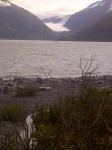
View from the shore of Portage Lake, where the Portage Glacier was once easily visible from the nearby visitor center, built in the 1980’s; glacial remnants are now a three mile boat ride away.
Glacier Melt: News flash: Portage Glacier has effectively become Portage Lake! The once massive Portage glacier has receded three miles from the visitor’s center, which was built with an observation area so that people could see the ice up close. All you can see from that observation area now is a lake, and the mostly glacier-less mountains which surround it.
Perhaps even more alarming, however, permafrost melt is happening at an alarming rate -threatening buildings and roads in the Fairbanks area and beyond, as well as the ecosystem necessary to keep Caribou and other iconic wildlife populations alive. The permafrost is releasing methane that has been stored there for thousands of years, as well as ancient bacteria – the potential effects of which are only now beginning to be researched. While in Alaska, I and the group I was touring with were able to tour the only permafrost research facility in the United States. There, we learned that permafrost is actually much older than the glaciers; in some places it dates to 20,000 years or more.
Another major threat to the state’s ecosystem looms in the fact that the trans-Alaska oil pipeline — three-quarters of which is built on top of that melting permafrost, leading to greater risk of huge oil spills (the pipeline transports two million barrels of oil per day).
Bristol Bay mining operations threaten one of the last commercial scale wild salmon fisheries in the world, and the native populations who depend on those fish for cultural as well as physical survival! Take action on this issue here.
Entire native communities on Alaska’s seacoast — such as those in Shismaref — are facing the need to relocate and/or drastically change their thousands of year old ways of life.
Melting sea ice and increased volume of sea water inundating their communities have devastated populations of wild game these communities have subsisted on for literally thousands of years. One young woman on our tour has found it necessary to open and run a food pantry in her community, which was previously made up of self-sufficient hunters.
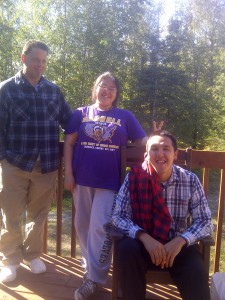
Tiffiny Immingan (middle), and George Pletnikof, Jr. (seated) are two young Alaskan Native community leaders, active in Alaska’s Climate Change and extractive industry struggles.
National Security issues: The sea ice is melting at such a rapid rate that one of the speakers on our tour — Dr. Michael Castellini, a University of Alaska scientist — had to attend a meeting with NATO officials on the same day that he spoke to our group about the effect of Climate Change on the polar ocean regions. He is also working to help design the newest research vessel in the US Naval fleet precisely to research the rapidly appearing “new sea” — aka the Arctic Ocean.
A direct and personal connection between Appalachia and Alaska, centered around large- scale surface coal mining, exists in the Matanuska-Susitna Valley — located in the south-central part of the state, near Anchorage. Here, three enormous surface coal mines are being proposed: Wishbone Hill, Jonesville, and Chickaloon. The latter of these is already active and may reach up to 15 square miles in size, if all 10,000 acres are fully permitted. Almost all of the coal to be extracted from these sites is slated for export; exploitation of one of our last true wilderness sites by multinational corporations is certainly alive and well in Alaska. Also alive and well, however, is a strong spirit of resistance, some of which was inspired by our work in WV. George Pletnikoff, Jr. — a young man whom has already achieved “elder” status in his community — participated in our tour. He is a leader in the Mat Valley Coalition, and said that watching a documentary featuring Maria Gunnoe was a big part of his inspiration for engaging in the struggle to stop the extractive industrial exploitation of his community. Click here to learn information about the struggles George and his community face.
These words can be found on that site: “Mine supporters claim that modern mining doesn’t create the same pollution and effects that it did in the past, but Appalachia tells a different story.”
Indeed our story is connected to the Alaskan story in some powerful ways. As University of Alaska scientist, Michael Castellini says: “What happens at the poles doesn’t stay at the poles” Thus, we all need to become active in efforts to control the pace of climate change. We here in Appalachia can also recognize that what happens here — in our surface mines, gas drilling operations, and chemical plants — doesn’t stay here. Thus, we should band together to preserve all the clean air and water possible.
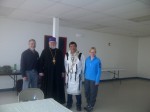
Religious leaders from Presbyterian, Lutheran, Orthodox, and Native communities in Alaska are working together to lead the way on Transition Community initiatives, as well as speaking out about extractive industry exploitation and climate change.
One note of hope on our tour came from people in Alaska who are trying to foster so-called “Transition Communities.” Transition Communities are those which will be resilient enough to survive the local and global climate changes happening and yet to come. These are made up of people who know how to be pioneers in many ways when it comes to alternative sources of home energy, food production, and water recycling.
Alaska — as our last frontier — may just lead the way into the transition lifestyle which will be necessary in the decades and generations to come. The fact that religious community leaders in Alaska are at the forefront of Transition Community initiatives is particularly inspiring.
We, in Appalachia — where we have also long valued indepence and self-sufficiency — have much that we can possibly contribute to the idea of Transition Communities, so let’s talk…
Click here for a great resource — used as reference for this blog — chock full of information on Alaskan signs of climate change.
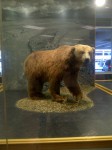
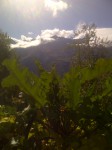
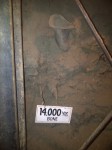
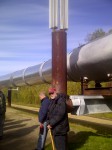
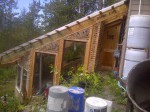
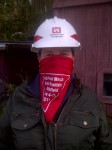




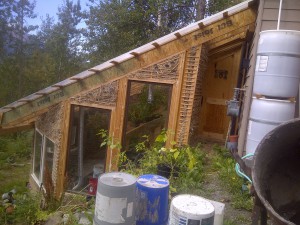





Great summary of our time together, Robin. Thank you
for your participation. And the fight goes on : it was made
public about 2 weeks ago that the Wishbone coal mine
permit was granted. George and all of us at Mat Valley
Coalition are working out our next steps of protest, so
please pray our efforts are successful.
God bless,
Barb in Palmer AK